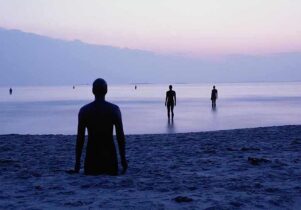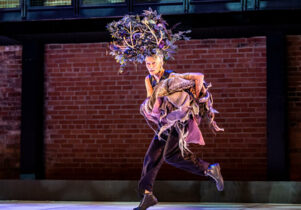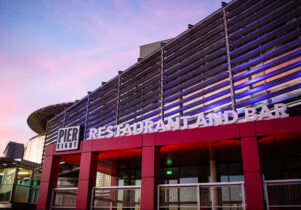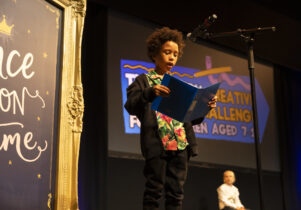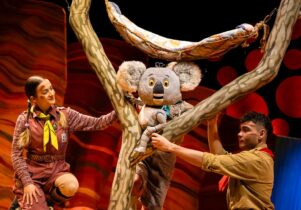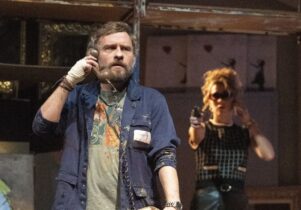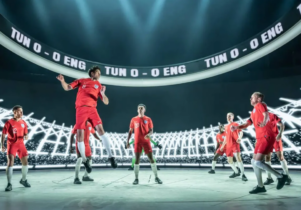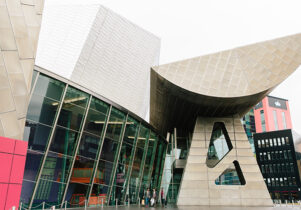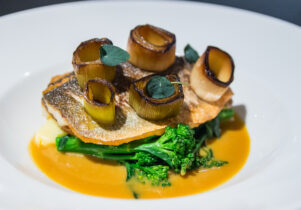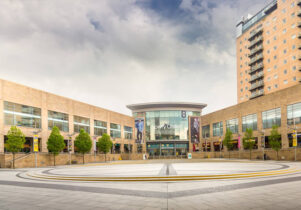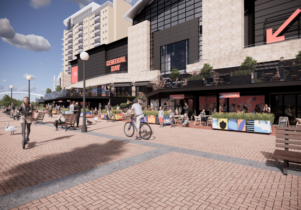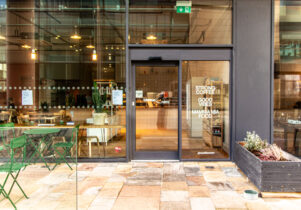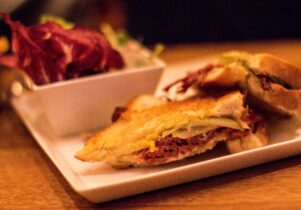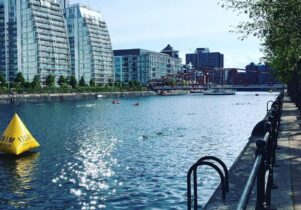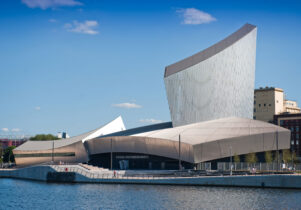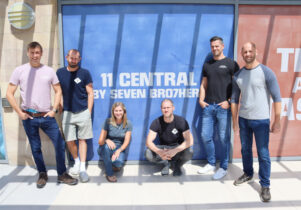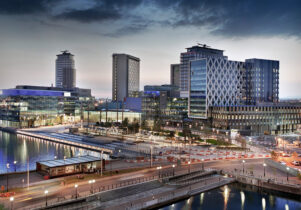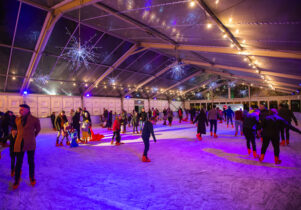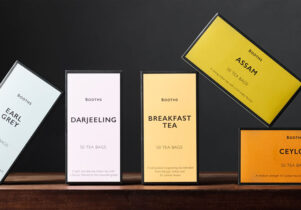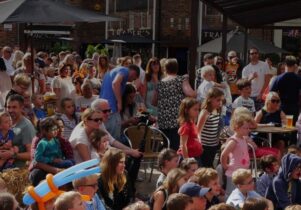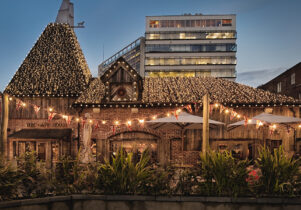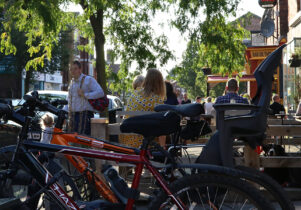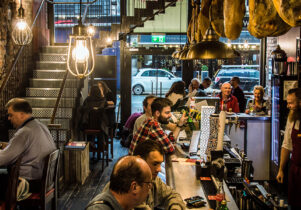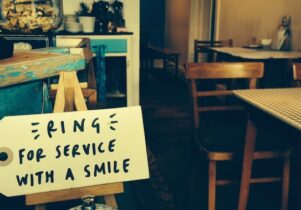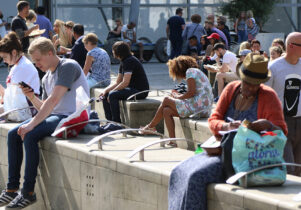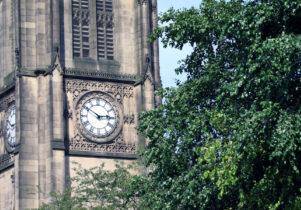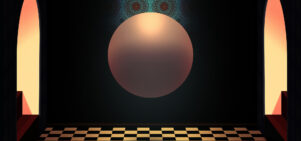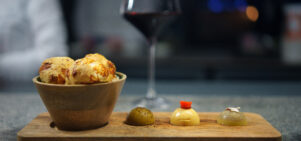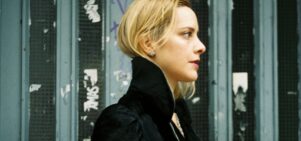Irwell Sculpture Trail
Creative Tourist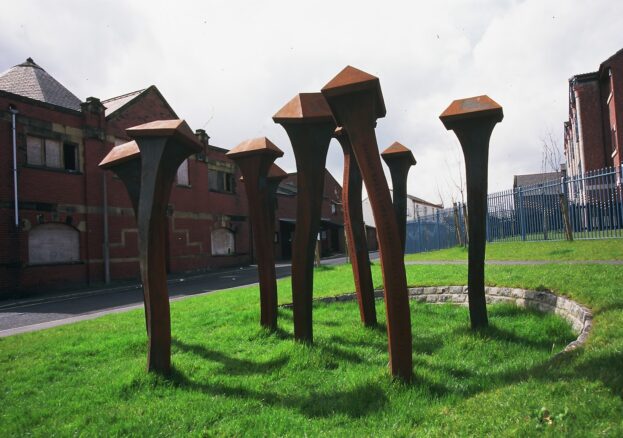
Exercise, muddy feet and fresh air are among the less celebrated benefits of viewing art, but the Irwell Sculpture Trail isn’t your typical art gallery. The 33-mile trail, which follows the River Irwell from The Quays in Salford all the way to Bacup in Pennine Lancashire, has been around for over a decade, but it’s been restored and expanded and there’s never been a better time to visit.
“The sculpture trail is a free day out that gets people out and about and walking outside,” Diana Hamilton, the trail’s project manager, said. “Visitors might pick up a sculpture trail leaflet in Salford and end up in Rossendale to see more sculptures.” The trail, which is run as a partnership between four local authorities, leads the viewer through the history of the industrial towns and cities that grew up along the Irwell. While some attempt the trail in one go as a long-distance walk, sculptures are grouped into clusters, making it easy to see it in segments.
After a few years of benign neglect, it’s good to see the trail being freshened up with new works and new interactive features. QR codes have now been added to the sculptures which anyone with a smartphone can scan to hear recordings of the artists or snippets of local lore. “Little nuggets of stories about old mill owners bring the trail alive,” Hamilton said. “It adds another layer to the experience and there is so much potential along the trail.”
Keep an eye on the Irwell Sculpture Trail website for events, maps and information, or pick up a free brochure at local tourist information points.
Whitefield cluster, Bury
Both of Whitefield’s contributions to the IST lie within hopping distance of the Metrolink station, and both are simple but effective. Bronze Castings at Morrisons by Oneninesixtwo Design tell the story of the town on the side of the supermarket. David Appleyard’s hard to spot Canaries in the Park sit still on the railings of Whitefield Park, slowly rusting and overlooking the bowling green in permanent silence.
Radcliffe cluster, Bury
The IST is well represented in Radcliffe, the next tram stop from Whitefield. My favourite artwork on the trail is Lawrence Weiner’s Water Made it Wet, although it’s a text piece rather than a sculpture; the words are spelled out in industrial-style lettering on a bright red bridge over the Manchester, Bolton and Bury canal, framing the hills in the background. Similarly striking is Jack Wright’s Nailing Home, an assemblage of warped, rusty nails I stumbled across beside a busy road.
Also within walking distance of Radcliffe Metrolink is Close Park Cluster, where you can spot the sculptures from a mile off: designed with the help of local schoolchildren, the incongruously shiny statues range from a chocolate cupcake to a dinosaur.
Bury cluster
Whether urban or rural in setting, the artworks on the Trail suit their surroundings. Jo Fairfax and Adam Spinos’ Metamorphic Lights, a sculpture at the Rock, Bury’s new shopping centre, consists of twinkling lights and brightly coloured columns which don’t look out of place among the glittering shop fronts. Ron Silliman’s From Northern Soul, an artwork in Bury Metrolink station (and Brass Art’s From the Tower Falls the Shadow in Radcliffe’s station) stand out because they make use of neon, the medium of the sign.
Burrs Country Park cluster, Bury
In Burrs Country Park, the Irwell is traversed by spectacular viaducts and an aqueduct. Despite its tranquillity, remnants of the park’s industrial past are present in the ruins of an old mill. Julie Edwards’ Stone Cycle is a collection of weathered, upturned stones that look as if they could be leftover stones from the mill. They were actually recycled from an old bridge and the artist added symbols such as nuts and bolts to masonry marks already on the stones, while handprints can’t help but bring to mind the human history of the site as a place of work.
As an acknowledgment that the river was once used by man to power industry, the entrance to the park is marked by David Kemp’s sculpture Waterwheel. This section of the River Irwell has now been reinvented as a place for leisure: visitors walk, fish, cycle and picnic, activities humorously reflected in David Fryer’s Picnic Area, a giant, shiny, stainless steel rat trap in the park’s picnic area.
Ramsbottom cluster, Bury
In Ramsbottom, children’s poems about what the river means to them personally snake around uprooted railway sleepers and Art from the Irwell Sculpture Trail in Lancashirea picnic area in a rather lovely sculpture by Hetty Chapman and Karen Allerton entitled, simply, The River. Just up the road, Edward Allington’s Tilted Vase looks like a piece of machinery that’s been dropped among the classical buildings of the picturesque town.
Clifton Country Park country, Salford
Tim Norris’s sculpture The Lookout unfurls into a vantage point for viewers to look out over the lake at Clifton Country Park. It’s a quiet place to reflect on man’s impact on the environment. What looks natural is, in fact, artificial: the lake was created when gravel was extracted from the site during the building of the nearby motorway. Elsewhere in the park, local schoolchildren imagined miners’ lives to help create sculptures depicting scenes from the Park’s past as a colliery. Rosie Leventon’s Dig is a sunken reminder of the evocatively named starvationer boats that once worked the mines, bringing home how different the site of the park would once have been.
